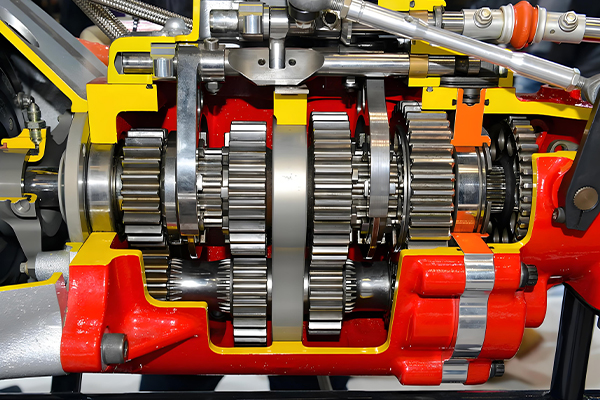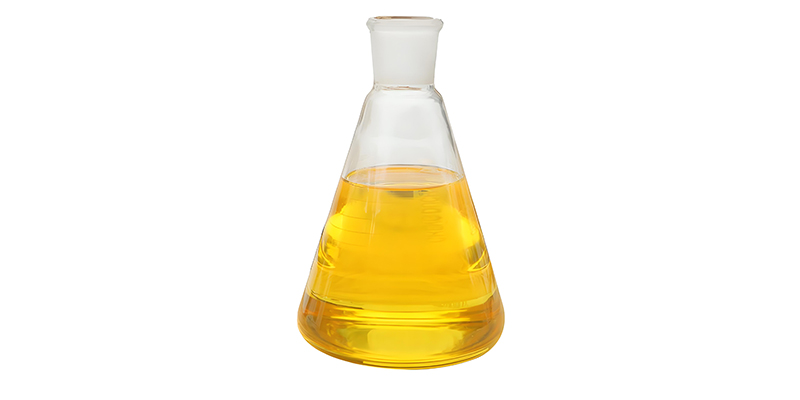
Hydraulic Fluids in Transmission Systems
The critical role and properties of hydraulic fluids in efficient hydraulic power transmission
The properties of liquids used as hydraulic fluids in hydraulic transmission systems have a significant impact on the performance of hydraulic systems. As the lifeblood of any hydraulic system, hydraulic fluids perform multiple essential functions that ensure smooth and efficient operation. Understanding the characteristics, requirements, and proper selection of hydraulic fluids is crucial for maintaining system integrity, efficiency, and longevity.
Primary Functions of Hydraulic Fluids
- Transmit power within the hydraulic system
- Lubricate moving parts, reducing friction and wear while preventing corrosion
- Disperse heat generated during system operation
- Seal clearances in对偶运动副 (paired moving parts)
- Transport, separate, and precipitate insoluble contaminants in the system
- Provide and transmit diagnostic information about component and system failures

Basic Requirements for Hydraulic Fluids
The performance of hydraulic systems is directly influenced by the quality of hydraulic fluids used. To ensure optimal operation, hydraulic fluids must meet specific requirements that allow them to function effectively under various operating conditions. These requirements ensure that hydraulic fluids can perform their multiple functions reliably over extended periods.
| Requirement | Description |
|---|---|
| Appropriate viscosity and good viscosity-temperature characteristics | Viscosity should be neither too high nor too low. Low viscosity increases leakage, while high viscosity increases friction losses. Hydraulic fluids should have appropriate viscosity for operating conditions and maintain stable viscosity across temperature changes, indicated by a high viscosity index. |
| Good oxidation stability and thermal stability | Oxidation stability refers to hydraulic fluids' ability to resist chemical reactions with oxygen-containing substances, particularly air, while maintaining physical and chemical properties. Thermal stability is resistance to chemical reactions and decomposition at high temperatures. Antioxidant additives are often used to enhance these properties, extending the service life of hydraulic fluids. |
| Good lubricity (anti-wear properties) | Beyond transmitting power, hydraulic fluids must lubricate moving parts. They should form strong adsorption on material surfaces with high anti-extrusion strength, creating effective boundary lubricating films on relative motion surfaces to prevent dry friction and reduce wear. |
| Good anti-emulsification and hydrolytic stability | Anti-emulsification is the ability to prevent hydraulic fluids from mixing with water to form emulsions. Hydrolytic stability is resistance to chemical reactions with water. Water in hydraulic fluids can cause corrosion, accelerate degradation,破坏润滑膜 (damage lubricating films), and reduce lubricating performance. |
| Good anti-foaming properties and air release ability | Anti-foaming properties refer to hydraulic fluids' ability to resist forming emulsions (foam) with air. Air release ability is the capacity to release dispersed bubbles. Gases are highly compressible, so bubbles in hydraulic fluids significantly reduce bulk modulus and can cause cavitation. |
| Good fire resistance | Mineral oils are flammable, so hydraulic fluids should have high flash and fire points to ensure safety. This is particularly important in applications where fire hazards exist. |
| Good corrosion protection | Hydraulic fluids must protect metal materials from rust and corrosion. Small amounts of active substances and acidity in hydraulic fluids could corrode metal surfaces, affecting component operation and service life. |
| Good compatibility | This includes compatibility with sealing materials, products, and the environment. Hydraulic fluids should not damage seals or significantly affect their performance, nor should they cause severe damage or pollution to products and the environment. |
| Other properties | These include good shear stability, filterability, cleanliness, stability, and harmlessness to humans. To enhance these properties, both mineral oil and non-mineral oil hydraulic fluids contain appropriate additives such as antioxidants, anti-foaming agents, oiliness agents, anti-wear additives, viscosity index improvers, pour point depressants, and corrosion inhibitors. |
Key Consideration
The additives in hydraulic fluids play a crucial role in enhancing their performance. Different formulations of hydraulic fluids are designed to optimize specific properties required for particular applications, making the selection of appropriate hydraulic fluids critical for system performance and longevity.
Types and Main Performance Indicators of Hydraulic Fluids
Various types of hydraulic fluids are available for hydraulic transmission systems, each with distinct properties suited to different applications. The selection of appropriate hydraulic fluids depends on factors such as operating conditions, environmental considerations, and performance requirements. Understanding the characteristics of different hydraulic fluids enables informed decisions that optimize system performance.
Classification of Hydraulic Fluids
Flammable Hydrocarbon Hydraulic Oils
- Mineral oil-based hydraulic fluids
- Synthetic hydrocarbon hydraulic fluids
These are the most commonly used hydraulic fluids due to their good lubricating properties and cost-effectiveness.
Fire-Resistant Hydraulic Fluids
- Water-containing hydraulic fluids (e.g., high water content fluids HFA, water-in-oil emulsions HFB)
- Water-free hydraulic fluids (e.g., phosphate esters)
These hydraulic fluids are used in applications where fire hazards exist, providing enhanced safety.

Various types of hydraulic fluids with different formulations for specific applications
Performance Indicators of Common Hydraulic Fluids
| Category | Grade | Kinematic Viscosity at 40°C (10⁻⁶m²·s) | Viscosity Index | Flash Point (open) °C | Pour Point °C | Mechanical Impurities % | Oxidation Stability (acid value reaches 2.0mg KOH/g) h |
|---|---|---|---|---|---|---|---|
| Ordinary hydraulic oil | 32 | 28.8~35.2 | 46 | 170 | -10 | None | 1000 |
| 46 | 41.4~50.6 | ||||||
| 68 | 61.2~74.8 | ||||||
| Premium anti-wear hydraulic oil | 32G | 28.8~35.2 | 90 | 200 | -15 | None | 1000 |
| 68G | 61.2~74.8 | ||||||
| L-AN Series | L-AN 32 | 28.8~35.2 | 95 | 180 | -10 | None | 1000 |
| L-AN 46 | 41.4~50.6 | ||||||
| L-AN 68 | 61.2~74.8 | ||||||
| Low-temperature hydraulic oil | 22 | 22 | 130 | 140 | -36 | None | 1000 |
| 32 | 32 | 140 | 160 | -36 | None | 1000 |
Viscosity Requirements for Different Hydraulic Pumps
The viscosity of hydraulic fluids is a critical parameter that significantly affects pump performance. Different types of hydraulic pumps have specific viscosity requirements for optimal operation, particularly considering the operating temperature range. Selecting hydraulic fluids with appropriate viscosity for the pump type and operating conditions ensures efficient operation and extends pump life.
Interpretation of Viscosity Requirements
The chart illustrates the recommended viscosity ranges for different hydraulic pump types under varying temperature conditions. Maintaining hydraulic fluids within these viscosity ranges is essential for:
- Minimizing internal leakage in pumps
- Reducing friction and wear on moving parts
- Ensuring proper lubrication under all operating conditions
- Maintaining efficient power transmission
- Preventing cavitation and aeration issues
Selection of Hydraulic Fluids
Selecting the appropriate hydraulic fluids involves considering multiple factors to ensure compatibility with system requirements and operating conditions. The right choice of hydraulic fluids enhances system performance, reduces maintenance costs, and extends equipment life. A systematic approach to selecting hydraulic fluids ensures that all critical parameters are evaluated.
Environmental Conditions
- Temperature range (minimum and maximum)
- System cooling capacity
- Presence of high-temperature heat sources
- Fire hazards or open flames
Higher ambient temperatures typically require hydraulic fluids with higher viscosity.
Operating Conditions
- Type of hydraulic pump
- System operating pressure
- Actuator movement speed
- Compatibility with metals and coatings
Pump type is the primary consideration, as pumps are most sensitive to hydraulic fluids properties.
Hydraulic Fluid Properties
- Physical and chemical indicators
- Performance characteristics
- Cost and availability
- Environmental impact
Mineral oil-based hydraulic fluids are preferred due to their availability and cost-effectiveness.
General Guidelines for Hydraulic Fluid Selection
Pressure Considerations
For low-pressure systems, hydraulic fluids with lower viscosity are generally recommended. As system pressure increases, higher viscosity hydraulic fluids are typically required to minimize leakage past seals and clearances.
Speed Considerations
When actuators operate at high speeds, hydraulic fluids with lower viscosity are preferred to reduce power losses due to fluid friction. Lower speeds can accommodate higher viscosity hydraulic fluids without significant efficiency penalties.
Temperature Considerations
In cold environments, hydraulic fluids with good low-temperature properties (low pour point and appropriate viscosity at low temperatures) are essential. For high-temperature applications, hydraulic fluids with excellent thermal stability and oxidation resistance are required.
Manufacturer Recommendations
Always consult equipment manufacturers' recommendations for hydraulic fluids selection. Manufacturers often provide specific guidelines based on extensive testing of their equipment with various hydraulic fluids.
Conclusion
Hydraulic fluids play a vital role in the performance, efficiency, and longevity of hydraulic transmission systems. By understanding the functions, requirements, types, and selection criteria for hydraulic fluids, operators and maintenance personnel can make informed decisions that optimize system operation. Proper selection and maintenance of hydraulic fluids contribute significantly to reducing downtime, minimizing maintenance costs, and ensuring safe and efficient system performance.